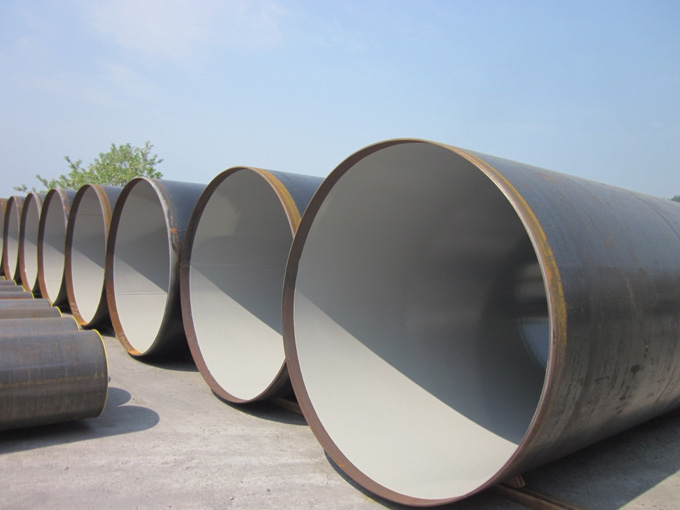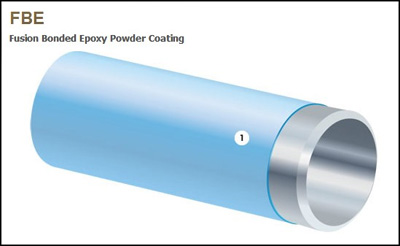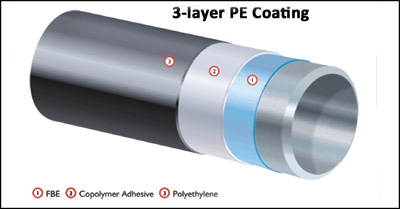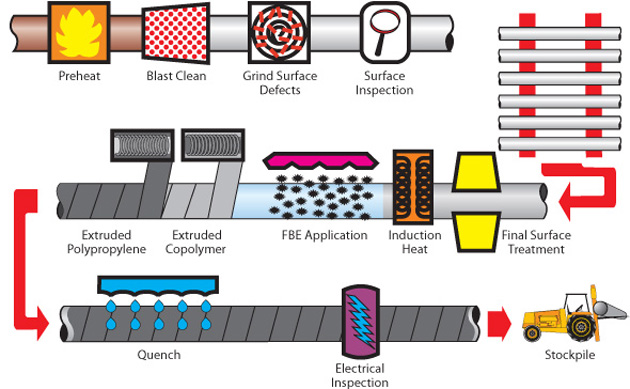As we all know, pipelines that transport oil, gas, chemicals and petroleum products are of crucial significance to the country economy. Therefore, the performance and maintenance of the pipelines are vital in the process. However, buried pipelines are easy to subject to corrosion attack if it is exposed to a wet environment. Pipeline corrosion refers to the deterioration of the pipes due to its interaction with the surrounding environment. It negatively affects the integrity and longevity of the pipelines. Thus, anti-corrosion protection is the top issue to consider in oil and gas industry. One of the best ways to control pipeline corrosion is anti-corrosion coating. Coating is a method to isolate pipelines from corrosion attack. Corrosion can be greatly minimized by selecting the right coating.

The internal and external area of the pipe can both be corrosive because of different factors. The external pipeline corrosion can mainly due to the surroundings, such as acid soil, wet conditions and so on. Factors that lead to internal corrosion are the oxygen content, temperature, pressure and flow rate of the liquid carried in the pipelines. Due to the above reasons, the anti-corrosive pipeline coating can be put into two corresponding categories, the internal and external corrosion-resistant coating.
Considering the various applications and complicated working conditions of pipelines, corrosion resistant coatings are designed and manufactured using different technologies and materials.

Fusion Bonded Epoxy, also known as thermosetting coating, is an epoxy-based powder coating widely used to protect pipelines from corrosion. Under normal temperatures, resins in the powder coating do not react. However, when the temperatures reaches to 250℉ the power begin to melts into fluid, flow onto the pipeline surface, and quickly stick to the pipe, forming a solid coating. This process contributed by heat is called “fusion bonding”.
During the process, the pipe must be preheated to get rid of moisture and grit blasted to get a clean surface. When the surface cleanness is checked and the preparation work is done, the pipeline and the coating are heated with induction to certain temperature, the FBE coating is formed. Once formed and experienced its cure time, FBE coating will not melt even in higher temperatures--that’s why it is called thermosetting coating.
Dual-layer coating refers to the use of a second layer of FBE that overcoats the first layer----the anti-corrosion coating. The second layer is applied directly on the first layer to protect the pipeline from abrasion.

Three-layer PE/PP is one of the most widely used anti-corrosion coatings in the field. As the names shows, it consists of three layers---the first layer FBE coating bonded to the PE or PP (polyethylene or polypropylene) topcoat using a co-polymer adhesive as the second layer coating. The FBE layer resists oxygen passage while the PP layer prevents water passage, greatly improve the anti-corrosion efficiency. The adhesive layer, which combines the FBE and topcoat together, assists in protecting the coating integrity and prolonging the coating’s service life.
The previous process of the formation of the three-layer PE/PP coating is similar to the FBE coating. After preheating, grit blasting and preparation inspection is done, the FBE layer is formed. Then the adhesive intermediate is applied by extrusion or spray followed by the polyethylene or polypropylene outer layer.
Three-layer PE coating enjoys more popularity in oil and gas pipeline industries, especially in onshore applications. Anson International Co., Ltd, specialized in manufacturing OCTG products and accessories, provides top quality three-layer PE coating for its clients. The standard top layer for 3LPP is high-density polyethylene (HDPE). Compared to lower density products, HDPE guarantees better combinations of properties, higher toughness and greater impermeability to both water and oxygen. The integral three-layer PE coating can ensure strong corrosion resistance, long-term operation at a relatively low cost.
